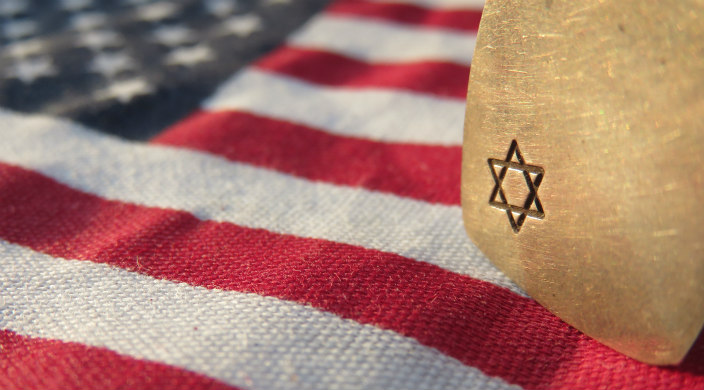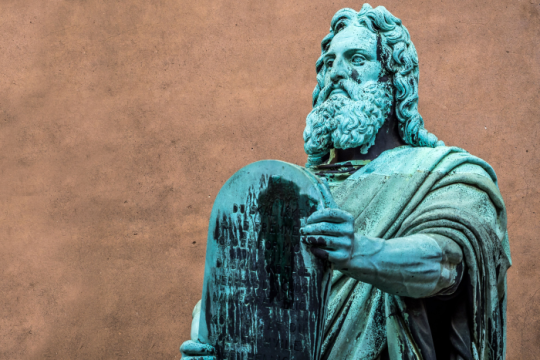
Steven R. Weisman’s new book, The Chosen Wars: How Judaism Became an American Religion, offers a compelling narrative about the formation of the Jewish religion in the United States. In discussing the Reform Movement as it evolved from the 1830s to today, he touches on many themes of importance to us in our daily lives as Reform Jews.
ReformJudaism.org: What inspired you to write this book, which is so different from your journalistic pursuits?
Steven R. Weisman: As a New York Times reporter, I covered government, politics, and economics. But I felt I could bring my journalism storytelling strengths to the religious conflicts that created a distinctly American Judaism in the 18th and 19th centuries. I wanted to write a book that not only would wrestle with and debate the fundamental issues that divide us, but also resonate with those troubled by conflict in today’s Jewish community, and assure American Jews that they possess a rich legacy.
Finally, the book marked a milestone in a personal journal for me. I grew up in a secular, Reform Jewish community. In my young adulthood, I spent time at an Orthodox seminary in Jerusalem, deepening my understanding and appreciation of Talmudic learning. But these experiences also made me want to understand the intellectual, cultural, and religious backgrounds of those Jews who broke from the Talmud in the 1800s.
This book is about how Judaism was transformed by the very idea of America. How did the notion of church/state separation also play into this transformation?
Three factors led to the transformation of Judaism: the practical necessities of traveling, earning a living, and interacting with people outside of the Jewish community, which led to adjustments of dietary, clothing, and Sabbath laws. There was a desire to “Americanize” Judaism by adopting more church-like practices. These included more English, including sermons; imposing decorum on services; eliminating obscure prayers; installing organs; mixing the sexes. There was also the intellectual necessity of conforming Jewish belief with acceptance of science and literary criticism of Scripture.
Other American factors were the severing of the relationship between religion and the state, ensuring the state could not be used to enforce religious laws, as in Europe. There were no rabbis in America until the 1840s, so congregations were run by members themselves. Also, the rise of secular Jewish organizations like B’nai B’rith created a secular power center to rival synagogues and rabbinical authorities.
I am fascinated by the dynamic you spin out of change led by lay leaders, instead of clergy, as Judaism becomes “Americanized.”
I think a major transformation of Judaism in America derives from its spirit of democracy: congregations shall determine their own path in conjunction with clergy, but ultimately decided in a democratic spirit. This idea is revolutionary. It led to a splintering of Jewish practices, and ultimate a splintering into three main branches. The most American thing about American Judaism is that it split apart into different factions, each one trying to find its own path to God.
You conclude that “For American Jews, the path forward is strengthened by the path they have followed: change qualified by tradition and faith in God and in divinely ordained ethical conduct, coupled with a determination to seek and define their own way to express that faith.” This sounds like a recipe for contemporary Reform Judaism. What, in your historical research, led you to this conclusion?
My book traces the spirit of social justice back to the words of the prophets, who put forward the idea that Jews would serve as a “light unto the nations,” much the way Americans in general have a prophetic notion of themselves derived from John Winthrop’s vision of a “City upon a Hill.”
Previously, Jews focused on the predictions that a Messiah would deliver the Jews back to Zion, restore the ancient Temple, and lead to the resurrection of the dead. These were among Maimonides13 principles of Judaism in the 12th century. But American Jews in the 19th century discarded these principles – they felt America was their Zion – much to the anguish and anger of traditionalists.
However, Jews did not discard the yearning for an era of redemption. The difference was that – influenced by liberal Protestantism, the Second Great Awakening, and the transcendental movement – Jews determined that they would bring about their own redemption and not expect God to bring it to them. There are all kinds of references to Jewish leaders in the 19th century promoting the idea that the Jews themselves were a “messianic people” with a mission to spread the word of God and strive for a more just and peaceful world for all peoples. From this idea evolved tikkun olam in the 20th century. The phrase is an ancient one, also associated with Jewish mysticism, but it has been borrowed to stand in for this idea of the Jews possessing a “mission” to improve (or repair) the world.



